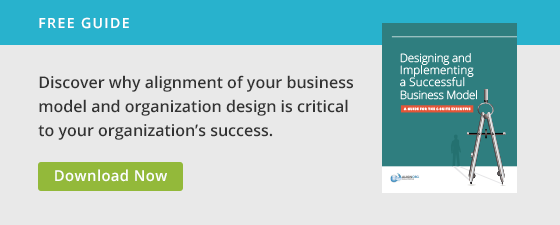Business model innovation is an essential element of success for today’s organizations. To stay competitive in a rapidly changing market, organizations must continually reinvent themselves.
At its core, good business model redesign is about finding a novel way to solve a customer need that hasn’t yet been met fully or in a differentiated way. There are many examples over the decades. For instance, forty or fifty years ago most of us didn’t realize we needed overnight package delivery. But then Federal Express came along and created a market for it. Now, we get irritated if things don’t get delivered in a day or two. FedEx found an unmet need and created a business model around it that redefined an industry.
FedEx’s innovative business model was very successful and, fortunately for them, relatively sustainable. However, as customers’ needs evolve and change over time, companies must come up with novel ways to adapt and differentiate.
Keeping Up With a Changing Market
We live in a vastly different world than the one FedEx faced in the 1970’s. Digitization and other technological innovations have created the need for everyone to move in response to increasingly faster cycles. The pace at which organizations have to innovate their business models is increasing because the markets and their competition are moving much faster.
This reality forces leaders to re-think their business models far more frequently than was necessary in the past. FedEx might have been able to introduce overnight delivery and sit on it for 40 years and still be in a good competitive situation. Now, however, a company can introduce a novel thing like that only to find that it’s no longer a sustainable differentiator just a few years later.
3 Winning Approaches to Business Model Innovation
In response to this constant pressure from the market, leaders continually find themselves asking, “How do I evolve or redesign my business model so that my organization stays in front?
Three key places for business leaders to explore in their organizations when seeking to create a sustainable and differentiated business model include:
- Innovate around your product or offering. What solution can you deliver for the customer that sets you apart and/or meets an unmet need? For instance, instead of just offering a widget, couple it with a service.
- Innovate how customers access your offering. Even if you don’t have anything as revolutionary as next-day-air delivery, you can still look for innovative ways to deliver it. Making it easier, faster, or more convenient for people to use and access your offering can be just as effective a differentiator as changing the product or solution itself. For instance, look at what Amazon has done in the retail space. Before Amazon introduced their e-commerce solution, not many people thought of a computer as a shopping tool. But now, shopping online is not only very common but is even often preferred to getting into a car and going to a brick and mortar store. Microsoft did a similar thing with their Office suite of products. They went from selling software on diskettes in retail stores to a convenient online download, and then to a subscription model.
- Innovate the back end. Another place organizations can innovate their business models and create better efficiencies or connections is in the supply chain or behind-the- scenes side of the business. Wal-Mart is a classic example. Their business model innovation on the back-end supply chain side enabled incredible efficiencies that allowed them to consistently drive lowest cost to such an extent that they essentially redefined the entire discount retail space. They found a differentiating lever they could pull in their industry that gave them a tremendous cost advantage over competitors, and as a result were very successful.
You don’t have to restrict business model innovation to just one of these approaches. It’s quite possible to mix and match two or more. Looking again at the Microsoft example, when they started offering Office on a subscription basis, they packaged it up with continuous updates and upgrades, online support, etc., and offered it at different levels. They haven’t really changed the core product, but they’ve certainly changed what goes with it.
Innovating for Relevance
Finding the right business model is a constant challenge for organization leaders as they strive to stay competitive. Looking for opportunities in these three areas—what the offering is, how the product or service is accessed, and how the differentiation can be achieved in the back end of the business—can help keep your business model relevant and differentiate it in the market.

